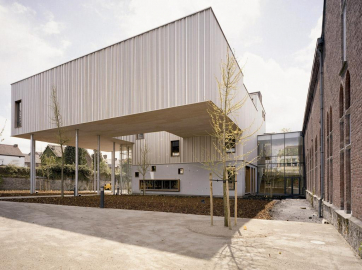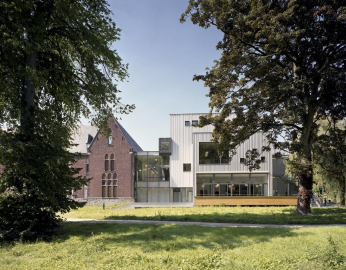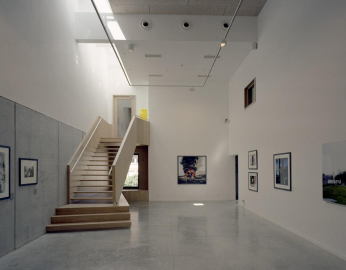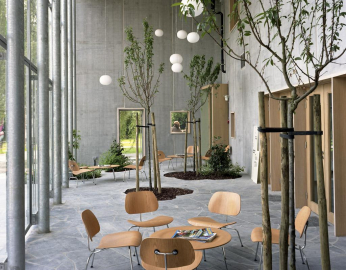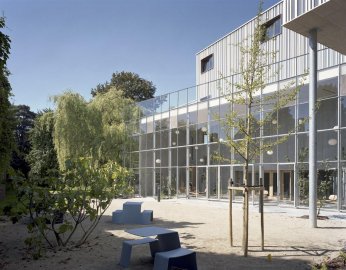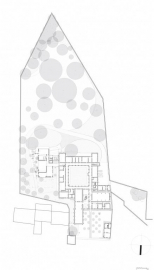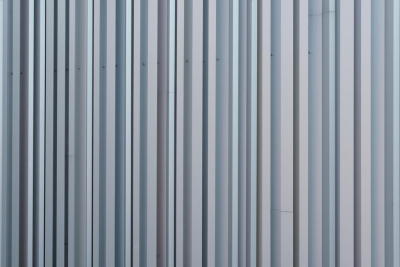New wing of the Museum of Photography
1+1 = 1
The new wing of the Photography Museum in Charleroi is located in the old orchard of the former Carmelite convent, where the Museum has thrived since its creation in 1987. The half wood, half concrete structure works as a concatenation of volumes and spaces, each volume functioning as both a room with a particular function and an antechamber to the following spaces.
For 6 months, the architects and the museum director defined the program, guided by the formula 1+1=1: both buildings serve as one museum, the new one becoming the interface between the convent and its park. During the programming phase, the needed new functions were distributed between the two buildings. Like a game of dominoes, as rooms in the convent were stripped of their functions, new ones took their place. The old building now shows the collection in chronological order, while the new wing uses each room to showcase a theme with photographs from the past 30 years.
The new wing as an interface
One of the main objectives of the project was to open the park to the visitors and the public. The convent is of a centripetal nature, with circulation and exhibition spaces organized by the cloister. The new wing works quite differently, by subverting the borders between inside and outside spaces, orchestrating a physical and visual promenade. Light-wooden framed bay-windows incite glances at the park and the neighbourhood creating a constant interaction, and questioning photography by the juxtaposition of these "real frames".
The implantation of the new wing within a traditional block of houses appeared as a unique opportunity to make of the park a public space and enhance the public institutions around it: a public school and a sports complex. Supported by the international standing of the museum, the opening of the park prompts an urban transformation process based on social and cultural dynamics.
The cantilever, a technical prowess
The architectural configuration of the new building demanded a light structure with no long-term heavy shoring. The choice was a massive timber structure whose walls would work as concrete walls. To this end cross laminated timber panels offer several assets: their thickness guarantees an easily quantifiable fire stability while bringing an interesting heat insulation coefficient for the structure. These panels are generally used vertically, juxtaposed to form a wall; but in this case they were used horizontally, piled up to achieve a very tall beam that would support the 12m cantilever.
The façade, a photographic work
Contrasting with the dark bricks of the carmelite convent, the new wing is covered with a luminous skin conceived in collaboration with the artist Jeanine Cohen. The panelling is made of anodized aluminium profiles, inside of which coloured panes subtly enliven the façade, changing with the light and the time of the day. Photographic in its own right, the work questions the meaning of photography as well as our perceptions.

